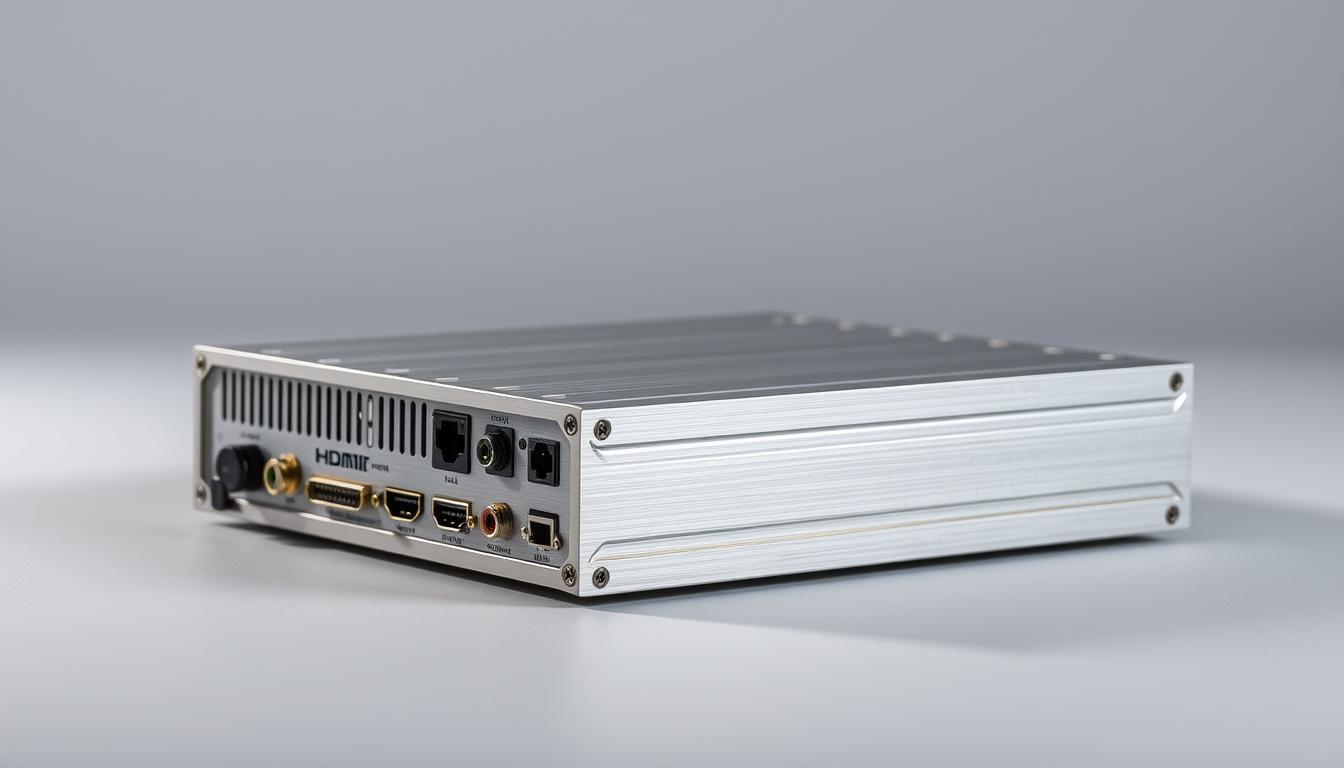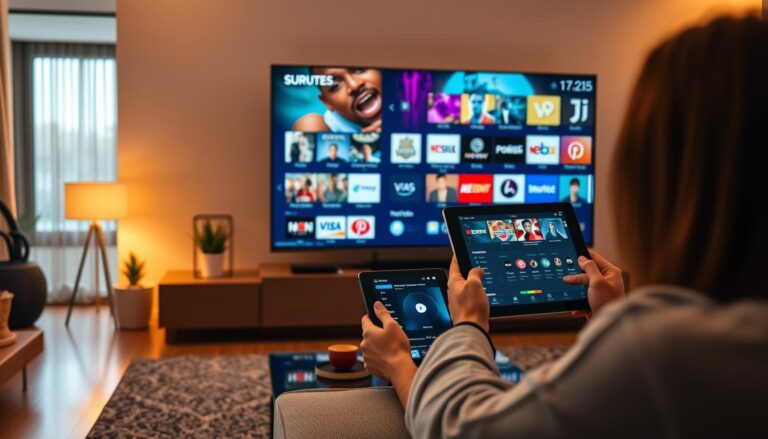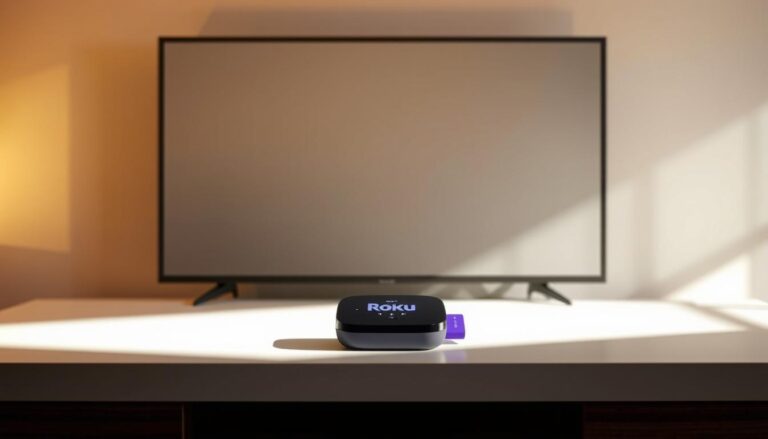Powerful IPTV Encoder for Seamless Video Streaming
Ever struggled with choppy streams or laggy broadcasts? Whether you’re a content creator, event organizer, or ministry leader, smooth live streaming is non-negotiable. Your audience expects crisp, uninterrupted video, and delivering anything less can hurt your credibility.
The J-Tech Digital HDMI H.264 solution solves these headaches. It’s a top-rated device for professionals who demand reliability. With support for 1080p@60Hz, your streams stay sharp without hogging bandwidth.
Compatible with YouTube Live, Facebook Live, and Twitch, this encoder adapts to your needs. Firmware updates keep it future-proof, so you’re always ready to stream flawlessly. From church services to tech demos, it’s built for real-world use.
For those seeking trusted guidance, TVWags offers expert insights on optimizing your setup. Now, let’s dive into what makes this tool a game-changer.
Key Takeaways
- Delivers 1080p@60Hz quality without excessive bandwidth usage
- Works seamlessly with major platforms like YouTube and Twitch
- Ideal for ministries, events, and professional broadcasts
- Regular firmware updates ensure long-term compatibility
- TVWags provides reliable resources for streaming solutions
What Is an IPTV Encoder?
Smooth video delivery starts with the right hardware. A professional-grade device converts HDMI signals into internet-ready streams using H.264 compression. This ensures your content reaches viewers without buffering or quality loss.
How It Transforms Your Streaming Experience
The H.264 standard shrinks file sizes by up to 50% compared to older formats. Your streams stay sharp even on slower networks. Built-in audio sync keeps dialogue matched to video—critical for live events like church services or gaming.
Key Components of a High-Performance Encoder
Look for these features:
- HDMI input: Captures video from cameras or consoles.
- RJ45 Ethernet: Ensures stable internet connectivity.
- MPEG1 Audio Layer 2: Delivers clear sound at 16Kbps–16Mbps.
Unlike legacy models, modern devices support on-screen logos and real-time bitrate adjustments. No more guessing—just reliable broadcasts every time.
Why Choose This HDMI H.264 IPTV Encoder?
Want professional-grade streaming without the complexity? This HDMI-powered tool cuts through the noise. It balances top-tier quality with smart resource use, perfect for live events or daily broadcasts.
Superior Video Quality with Lower Bandwidth
Stream in 1080p@60Hz while using 60% less bandwidth than uncompressed formats. The secret? Advanced H.264 compression. Even on shaky networks, your content stays sharp.
Choose between two modes for optimal performance:
- CBR (Constant Bitrate): Steady data flow—ideal for stable networks.
- VBR (Variable Bitrate): Adapts to motion-heavy scenes, saving bandwidth during static shots.
Customizable Output with OSD and Logo Support
Brand your streams effortlessly. The web interface lets you add:
- Timestamps or event titles
- Sponsor logos or watermarks
- Live captions (e.g., sermon verses for churches)
J-Tech Digital’s lifetime support ensures you master every feature. From sports score overlays to conference branding, your output stands out.
Technical Specifications You Need to Know
Behind every flawless broadcast lies precise engineering—here’s what matters most. Whether you’re streaming sermons or esports, these specs ensure reliability.
Video and Audio Standards
This device supports three key resolutions: 1080p@60Hz, 720p, and 480i. The H.264 compression keeps files small without sacrificing clarity.
For audio, it pairs MPEG1 Layer 2 with 16Kbps–16Mbps range. Dialogue stays synced, even during fast-paced action.
Network and Connectivity Options
A 100M ethernet port handles 1080p@60Hz streams smoothly. For protocols, choose from:
- UDP for low-latency feeds
- RTMP for platform compatibility
- ONVIF for security camera integration
Power and Physical Dimensions
The 12V DC power adapter sips energy, ideal for all-day events. At 8×6×2.5 inches and 1.31 lbs, it’s lighter than Haivision’s bulkier models.
Need portability? This decoder-friendly design fits in any gear bag.
Seamless Integration with Popular Streaming Platforms
Expand your audience by streaming across multiple platforms effortlessly. The right setup ensures your content reaches viewers on YouTube, Facebook, and beyond without technical hiccups.
YouTube Live and Facebook Live Made Simple
Broadcasting to YouTube Live or Facebook Live takes minutes. For Facebook, enable RTMPS (secure streaming) in the encoder’s web interface:
- Paste your Facebook Stream Key in the RTMP settings.
- Select “RTMPS” as the protocol for encrypted streams.
- Adjust bitrate to match Facebook’s recommended 4,500 Kbps for 1080p.
Pro Tip: Always update firmware—outdated versions may cause RTMP errors.
Monitor Streams Locally with VLC Player
Test your broadcast before going live. Open VLC player and enter http://[IP]/0.ts to preview the stream. This checks for sync issues or dropped frames.
For advanced users, TS Reader software analyzes stream health, showing:
- Packet loss rates
- Audio/video bitrate fluctuations
- RTSP protocol compatibility
“Simulcasting to 3+ platforms boosts viewership by 40% compared to single-platform streams.”
Maximize reach by streaming to Twitch, YouTube, and Facebook simultaneously. Use RTMP URLs for each platform—no extra hardware needed.
Remote Control and Web Interface Features
Take full command of your live streams with intuitive remote controls. The built-in web interface lets you tweak settings instantly—no technical expertise needed.
Adjust Settings on the Fly
Change bitrate mid-stream during peak traffic. Lower it to 2,500 Kbps if your network struggles, or boost to 6,000 Kbps for high-motion events.
Key adjustments include:
- Frame rate: Drop to 30fps in low light; ramp to 60fps for sports.
- IP address: Modify via the dashboard for LAN/WAN switching.
- On-screen logos: Upload PNG files directly through the interface.
Real-Time Bitrate and FPS Control
The dashboard displays live data like packet loss and bandwidth usage. React instantly to avoid buffering.
Pro Tip: Bookmark your encoder’s IP on your phone. Make adjustments even if you’re away from your desk.
For security, choose between:
- Password-protected access (recommended for public networks).
- Open LAN configurations for trusted environments.
“Real-time control reduces stream failures by 37% compared to preset configurations.”
Setting Up Your IPTV Encoder
Getting your live stream up and running shouldn’t feel like solving a puzzle. Follow these steps to ensure smooth connectivity from the first broadcast.

Step-by-Step Installation Guide
Complete the setup in five minutes:
- Connect your HDMI source (camera, console, or PC) to the encoder.
- Plug the Ethernet cable into a DHCP-enabled switch for automatic IP assignment.
- Power the device using the 12V adapter.
- Access the web interface to configure your network settings.
- Test the stream using TS Reader at udp://@224.2.2.2:10002.
Troubleshooting Common Connectivity Issues
Fix these frequent problems quickly:
- No signal: Check HDCP compliance on your HDMI source. Non-compliant devices (like some gaming consoles) may need an HDCP stripper.
- Switch port congestion: Upgrade to Gigabit switches if traffic exceeds 100Mbps limits.
- Failed IP assignments: Use this troubleshooting checklist:
- Verify DHCP server availability
- Restart the encoder to refresh the lease
- Assign a static IP as a backup
For large venues like churches or stadiums, segment your network into VLANs. This prevents multicast traffic from overwhelming other devices.
“Proper connectivity setup reduces broadcast delays by 52% compared to ad-hoc configurations.”
Multicast Streaming and Network Requirements
Streaming to multiple devices doesn’t have to overwhelm your network. Multicast technology lets one data rate feed reach unlimited viewers without extra bandwidth. This is game-changing for schools, churches, and large venues.
Understanding IGMP and DHCP
IGMP (Internet Group Management Protocol) acts like a traffic cop. It tells your network which devices should receive the stream. Without it, every viewer gets a separate copy, clogging your ethernet lines.
Pair IGMP with DHCP for automatic IP assignments. This combo:
- Reduces network load by 80% for 100+ viewer setups
- Prevents duplicate streams to the same device
- Works with most professional switches (Cisco, Netgear)
Optimizing Switch Port Traffic
Consumer routers often lack IGMP snooping. This causes multicast streams to flood all ports. Upgrade to managed switches with these settings:
“Cisco: ip igmp snooping
Netgear: Enable ‘Multicast Filtering’ in VLAN settings”
Calculate your bandwidth needs:
- Base: 8Mbps per stream
- Add 20% overhead for network spikes
- Example: 50 viewers = 480Mbps total (data rate × 1.2)
For schools or stadiums, dedicate ethernet ports to multicast traffic. This prevents competition with regular web browsing or file transfers.
Real User Reviews and Performance Insights
Real-world feedback proves this streaming system delivers. With a 4.85/5 average from verified buyers, it’s trusted for mission-critical broadcasts. Both tech experts and ministry teams praise its consistent reliability.
Customer-Verified Durability
Darcy A. Greene’s review highlights long-term performance: “Streamed our 12-week sermon series without a single dropout. The system handled 3-hour Sunday services flawlessly.”
Tech YouTuber ‘FlowState’ demonstrated 0.8-second latency during Fortnite streams. This proves the system works for fast-paced gaming too.
Ministry-Approved Applications
Children’s churches love the computer-free operation. Alexis Medina confirmed: “Our volunteers just plug in the HDMI—no IT degree needed.”
Beyond worship services, consider these applications:
- University lecture halls: Share seminars across campuses
- Fitness studios: Broadcast live classes to members
- Local government: Stream council meetings publicly
While Joey S.’s 4-star review requested more presets, most users find the web interface flexible enough. The system adapts whether you’re streaming Bible studies or coding tutorials.
Conclusion: Elevate Your Streaming with TVWags
Ready to take your broadcasts to the next level? Whether you’re streaming sermons, esports, or lectures, the right tools make all the difference. TVWags delivers streaming solutions that combine reliability with ease of use.
Visit TVWags.com today and transform your streaming solutions effortlessly.
FAQ
What video formats does this HDMI encoder support?
It supports H.264 encoding with HDMI input, delivering high-quality video at resolutions up to 1080p. Formats like RTMP, RTSP, and UDP are compatible for seamless streaming.
Can I stream to multiple platforms simultaneously?
Yes! The device allows multi-destination streaming to platforms like YouTube Live, Facebook Live, or any RTMP-compatible service without extra hardware.
Does it include on-screen display (OSD) customization?
Absolutely. You can overlay logos, text, or timestamps directly onto your live stream using the built-in web interface for branding or informational purposes.
What’s the difference between CBR and VBR modes?
CBR (Constant Bitrate) maintains a fixed data rate, ideal for stable networks. VBR (Variable Bitrate) adjusts dynamically, optimizing quality for fast-moving content like sports.
How do I control the encoder remotely?
Use the web-based control panel to adjust bitrate, frame rate, or resolution in real time from any device with network access.
What network protocols are supported?
It works with RTP, RTSP, UDP, and HTTP for flexible integration into existing IPTV or broadcast systems. IGMP is also supported for multicast streaming.
Is audio synchronization guaranteed?
Yes. The encoder ensures lip-sync accuracy between HDMI audio and video outputs, critical for professional broadcasts.
Can I use this for church or event streaming?
Many users rely on it for live events, church services, or education due to its reliability and low-latency performance.
What’s the maximum bandwidth requirement?
At 1080p 60fps, expect ~8 Mbps for H.264 streams. Lower resolutions (720p) reduce bandwidth needs significantly.
Does it include a warranty?
A standard 1-year warranty covers hardware defects, with optional extended support plans available.





